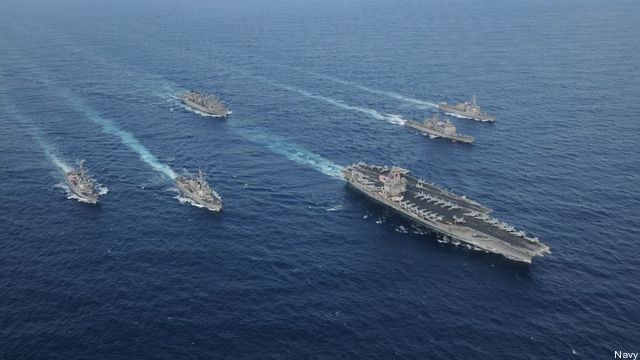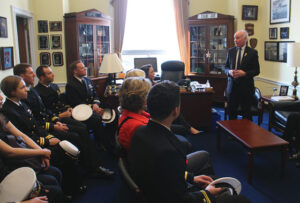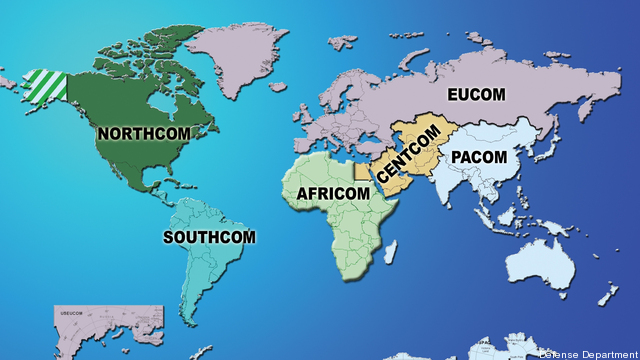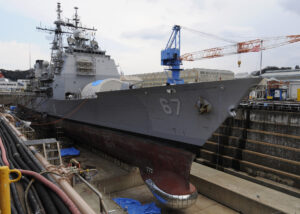The 355-Ship Fleet Will Take Decades, Billions To Build: Analysts
Posted on

WASHINGTON: The Navy’s new Force Structure Assessment calling for a 355-ship fleet puts an important intellectual arrow in Donald Trump‘s quiver as he campaigns for more ships. But it doesn’t put any more money in the budget to buy them, or any more machinery in shipyards to build them. The Navy analysis will shape the budget debate, starting with the supplemental spending request Trump is likely to introduce early in his term, but there are many obstacles along the road to 355, a road that may well take into the 2030s.
[Click here for a detailed breakdown of the 355-ship fleet]

Rep. Joe Courtney meets with young submarine officers.
“What’s really important about this report is it came from Barack Obama’s secretary of the Navy [Ray Mabus], which I think will help depoliticize, to some degree, this issue,” said Rep. Joe Courtney, the ranking Democrat on the House seapower subcommittee. “If this report was part of the new president’s budget, if that was the first we saw of it, I think frankly the politics would have been more challenging.”
Because it comes from the Obama Pentagon, Courtney continued, it’s harder for his fellow Democrats to dismiss it as “it’s just a wish list, it’s a political gambit,” he told me: “This is something that’s really founded in what’s happening out there (in the world). We hear about it from Adm. (Harry) Harris (head of Pacific Command), we hear it about it from (Gen. Philip) Breedlove (former head of European Command), that the Navy needs to grow.”
“That’s certainly a point I very much want to make to my colleagues,” Courtney said: “This started years before the 2016 elections.”

The military’s geographic Combatant Commands (COCOMs).
“This consensus that is building around 350… it’s been building for the better part of a decade,” agreed a former analyst in the Office of the Secretary of Defense. “What it really represents — this is key — this is what the COCOMs have asked for.” The regional Combatant Commanders, men like Harris and Breedlove, don’t have the authority to say what the global fleet should be, but if you add up all the forces they say are necessary to cover their individual areas of responsibility, the analyst said, “it comes to about 355, actually.”
(Incidentally, like most of my sources, the ex-OSD analyst spoke to me yesterday, before we knew that 355 was the exact figure. That’s pretty prescient).

Tom Mahnken
Many analysts outside of government have also converged on about 350 ships. “Independent analyses have been calling for a fleet of roughly that size for some time, to include the 2010 QDR Independent Panel, as well as CSBA’s recent alternative fleet architecture study,” said Tom Mahnken, president of the Center for Strategic and Budgetary Analyses, which Congress commissioned to do an (as yet unpublished) force structure assessment. “And yes,” said Mahken, “I believe that a fleet of roughly 350 ships is what we need to be able to deter competitors as well as fight and win should deterrence fail.”
But it’s a big deal that the Navy has officially joined this chorus calling for circa 350 ships. Even though the larger fleet is still far from funded, said CSBA analyst Bryan Clark, “the FSA is important, however, because it identifies a target based on the Navy’s own analysis.”
Three congressional sources, all insisting on anonymity, agreed the Navy’s throwing its institutional and analytical weight behind a ca. 350-ship fleet. (Note that I spoke with all three before the precise figure of 355 was published).

Bryan Clark
“A new force structure assessment calling for a 350-ship Navy does provide robustness and, presumably, a solid analytical foundation for the Trump administration position,” one congressional source told me. “It will be one area in defense where it can hit the ground running,” with a supplemental spending request.
“The official force structure assessment will carry some weight, especially given the timing,” agreed a second congressional source. “If the new administration can find a way to pay for it, I’m sure most members of Congress would support additional shipbuilding, as has been the case historically.”
But that’s a huge “if.” Even achieving the Navy’s now-superseded goal of 308 ships by 2021 would have required more money than the service has, the second source said: “Fully funding the current shipbuilding plan will take on the order of $5 billion more per year. Going above and beyond that plan would require a lot more.”
In fact, the Navy can’t afford the 275 ships it already has, said a third congressional source. Sure, the Navy’s already paid to build them, but those up-front costs are dwarfed by the decades of day-to-day expenses, from paying sailors to buying fuel.
“They don’t have enough O&M [Operations & Maintenance] funds programmed. You’re seeing the impacts – less flying, deferred ship maintenance, etc.,” said the source. “They don’t have enough O&M and people programmed in the FYDP [Future Years Defense Plan] to support 308 ships in 2021,” the now-superseded number. In the current long-term budget, said the source, “the Navy plans to have 36 more ships, but 4,000 fewer Sailors compared to FY16. How’s that work?”

A Navy Aegis cruiser in drydock for a maintenance “availability.”
Even if Congress and the Navy can come up with the funding to buy, crew, and operate 355 ships, it’ll take years to build them all. In stark contrast to the robust shipbuilding industry that built up the six thousand-ship fleet of 1945, today’s fleet is almost entirely built in just five shipyards, all so dependent on the Navy they’re “one contract away” from going under. Even with abundant funding, it takes years to build more facilities and train more skilled workers.
“I think 15 years is probably the fastest you can do and still maintain a balanced fleet,” said the first congressional source. “If you want to buy a lot of small combatants, maybe you can squeeze that to a decade” — but that’s not the path the Navy has chosen, since its figure for small surface combatants is unchanged at 52, less than 15 percent of the 355-ship fleet.
“Our own fleet architecture study came to a number similar to the 350 ships desired by President-elect Trump,” agreed CSBA’s Clark. “Given industrial base constraints, however, the shipbuilding plan we developed doesn’t reach the required numbers until around 2030.”
If Congress cooperates, Trump can get a good start on a 355-ship fleet. But even in two terms, he can’t get all the way there.
FSA Executive Summary SECNAV Final by BreakingDefense on Scribd
Subscribe to our newsletter
Promotions, new products and sales. Directly to your inbox.
